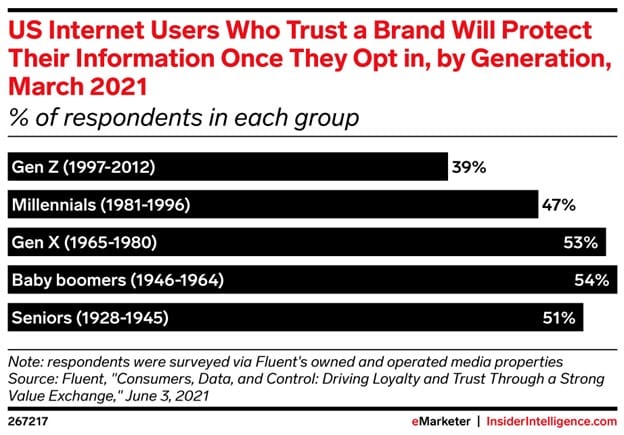
Gen Z is participating in candid online conversations regarding subjects from weight loss culture to pop music trends, including signs of recession. Nonetheless, there’s speculation about this generation undergoing a sexual recession. Data from the Centers for Disease Control and Prevention shows a decrease in sexual activity among Gen Z in comparison to earlier generations. Several reports imply that this trend could be associated with Gen Z’s aversion to sex, or sexphobia.
The cultural narrative refers to Gen Z as “virgins” or sexless, prompting inquiries about their status as a sexually repressed generation. The internet and social media significantly influence Gen Z’s sexual conduct, with 81% engaging with social media daily and half dedicating over three hours to it. This digital presence impacts their health, welfare, and comprehension of sex.
The reduction in sexual activity isn’t merely negative or positive. It is shaped by the circumstances under which Gen Z develops their beliefs about romance and sex. Comprehensive sex education is vital but not uniformly available, with merely 19 states mandating medically accurate information as of 2025. The internet provides a multifaceted alternative.
As Gen Z navigates sexuality online, it may not result in sexphobia, but rather in a sexual culture informed by their digital encounters. Some individuals discover more genuine sexual lives, while others absorb repressive signals.
Gen Z’s lower sexual activity might arise from exposure to a plethora of viewpoints on sexuality, broadening their comprehension of what sex encompasses. Social media algorithms showcase a range of authentic sexual experiences to users, offering a type of sex education that fosters confidence in personal desires, which could result in less sexual engagement.
For those identifying as asexual or feeling coerced into sexual activity, online discussions provide insights on “compulsory sexuality,” assisting them in processing their experiences. This knowledge may help them avoid engaging in unwanted sexual encounters, a pervasive challenge in older generations.
Social media expands Gen Z’s perception of sexuality, leading to less conventional interpretations of sex. Sex educator Danielle Bezalel notes that Gen Z may define sex more broadly, including activities that go beyond traditional heterosexual intercourse.
The discrepancy between mainstream and Gen Z’s definitions of sex could be a factor in the reported decline in sexual activity. Conventional statistics frequently overlook non-heteronormative sexual actions like solo sex, sexting, or kissing.
However, not all online content is beneficial. Some young people encounter abstinence-only or purity-culture messages, promoting shame and control over their bodies. Social media has the potential to both dismantle and reinforce conservative sexual narratives, affecting Gen Z’s sexual conduct.
Growing online censorship by lawmakers and tech firms restricts young people’s access to comprehensive sex education. Government actions to eliminate “gender ideology” from federally funded materials and age verification laws hinder access to crucial sexual health information. Meta’s alleged shadowbanning of sex educators further curtails diverse viewpoints on sexuality.
Dr. Laurie Mintz points out that digital platforms can objectify individuals, rewarding characteristics associated with whiteness, thinness, and cis-heteronormativity, complicating relationships and redefining intimacy for Gen Z. This digital exploration may foster anxiety and reluctance around sex, particularly regarding concerns about rejection and perfectionism.
Bezalel observes an increase in Gen Z using AI to craft break-up messages, indicating a preference for perfection over personal engagement. Online exposure to idealized bodies and romance can intensify anxiety, rendering the pursuit of sex overwhelming.
For some, this hesitation results in a positive reassessment of sexual desires. Shakib notes that femme clients often emphasize personal pleasure over validation through sex, deriving satisfaction from pursuits like masturbation, dancing, or reading.
Elevated screen time for Gen Z correlates with diminished opportunities for in-person sexual encounters. Social media and internet usage predominate their lives, leaving scant chance for sexual exploration. Shakib and Bezalel propose that the time spent online could be more effectively used for socialization or new romantic encounters.
Reports indicating Gen Z’s dwindling sexual activity don’t necessarily signify sexphobia but may illustrate the impact of the internet in bridging interest and action. Young people can investigate desire through fantasy, pornography, or dialogues without the urgency to engage in partnered sex, creating a safe space for curiosity absent of pressure.
Garcia clarifies that access to online sex education can lead to hesitation or postponement, yet it isn’t merely fear or repression. It involves discernment, survival, and maneuvering through sex in a landscape where information is abundant, yet safe conditions are not assured.
Mintz adds that young individuals might realize that sex isn’t a universal norm, empowering them to make their own decisions. When comprehensive sex education aligns with shame-free online messaging, sexual agency can manifest through various avenues, whether engaging in sex, abstaining, waiting, or exploring.